The past few weeks have been another extensive session of exploration – diving deep into emerging technologies, brainstorming wild possibilities, and sketching out futuristic concepts. We scoured through the Future Today Institute’s Tech Trends, exploring fields like biotechnology, quantum computing, the metaverse, and more.
Some technologies instantly grabbed our attention: DNA manipulation, bacteriophages, bio-manufacturing, green propulsion systems, interactive AI, Medipix, CRISPR, and even organoid computing. Each one sparked new ideas, pushing us further into speculative design and concept prototyping.
From NASA to Nanobubbles
As we pieced together our ideas, we asked ourselves: What existing infrastructure can we leverage? Enter NASA’s satellite system – already monitoring Harmful Algal Blooms (HABs) through imagery. The issue? It only detects blooms once they’re visible to the naked eye, meaning the damage has already begun.
We envisioned a real-time, localized monitoring system that wouldn’t just use NASA’s data but enhance it with on-the-ground sensors, helping to predict and prevent HABs before they escalate. Speculative thinking (and a lot of whiteboarding) led us to an exciting prospect: biosensors. With ongoing research backing this concept, we felt confident in designing a system that could work toward this future.
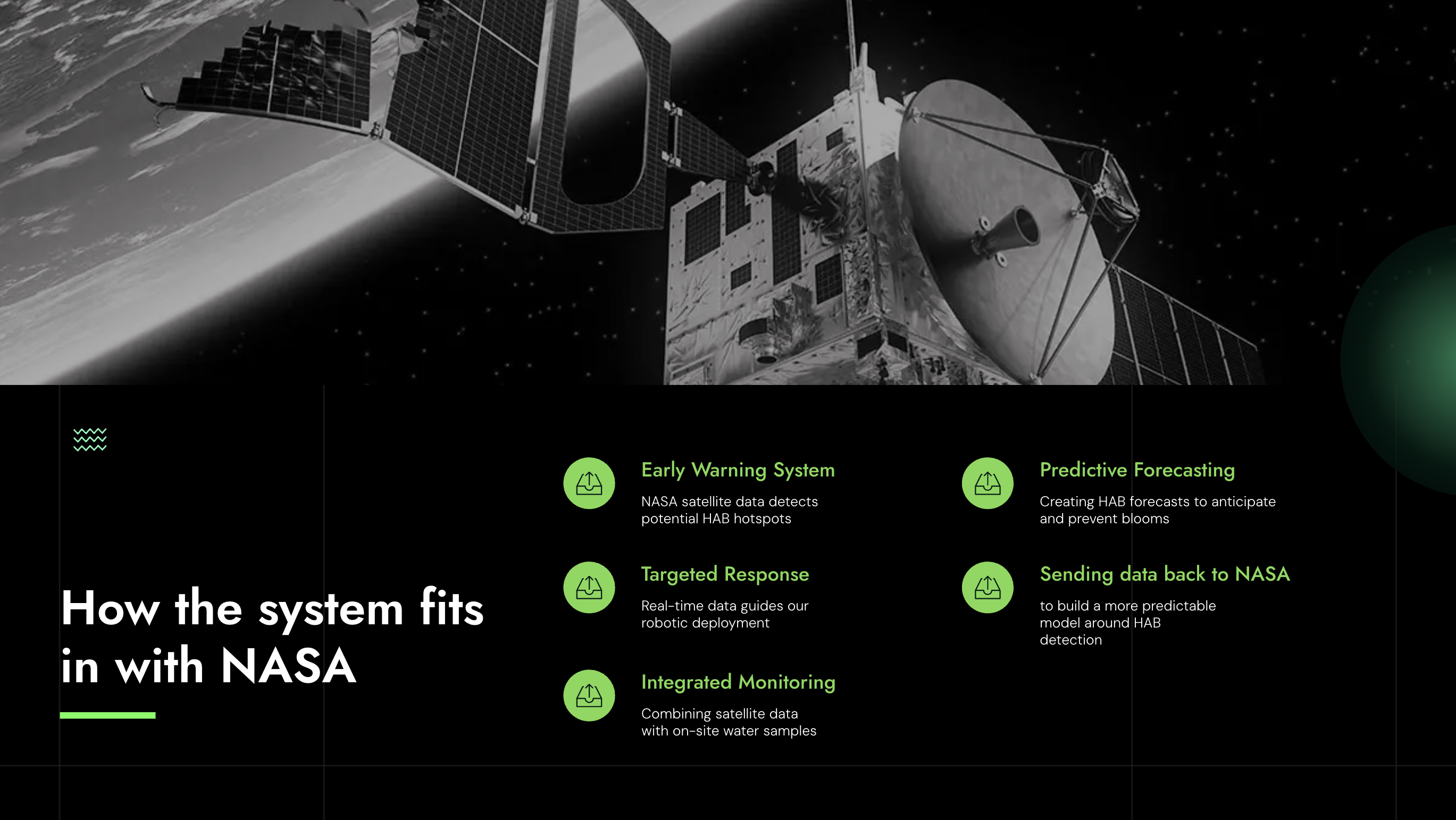
Treating HABs: A Two-Pronged Approach
Once the system detects a HAB, it deploys one of two treatment methods, based on severity:
- For minor blooms:
- Oxygen nanobubbles trap excess nutrients and redirect them back into the soil.
- For severe blooms:
- An engineered bacteriophage releases a targeted chemical treatment to break down HAB toxins.
- Nanobubbles then trap neutralized molecules, which facilitates sinking, becoming part of the natural soil composition.
Closing the Loop: Circular Economy
With toxins neutralized and nutrients repurposed, what happens to the algae? Inspired by Xinghua Meng’s “trash-to-treasure” concept, we found a way to extract biomass from the collected algae and process it into battery components.
This means that instead of treating HABs as just a problem, our system transforms it into an opportunity – a cleaner ecosystem and a sustainable energy resource in one.
Meet Casper: The Heart of Our System
With the core idea mapped out, we moved on to bringing it to life. Claudia and Shannon led the charge in design, with two competing visions:
- Claudia’s futuristic, non-robotic structure
- Shannon’s elegant, environment-blending approach
We combined the best of both worlds and landed on Casper – a sleek, intelligent system that quietly monitors water quality, deploys treatment, and collects algae for processing.
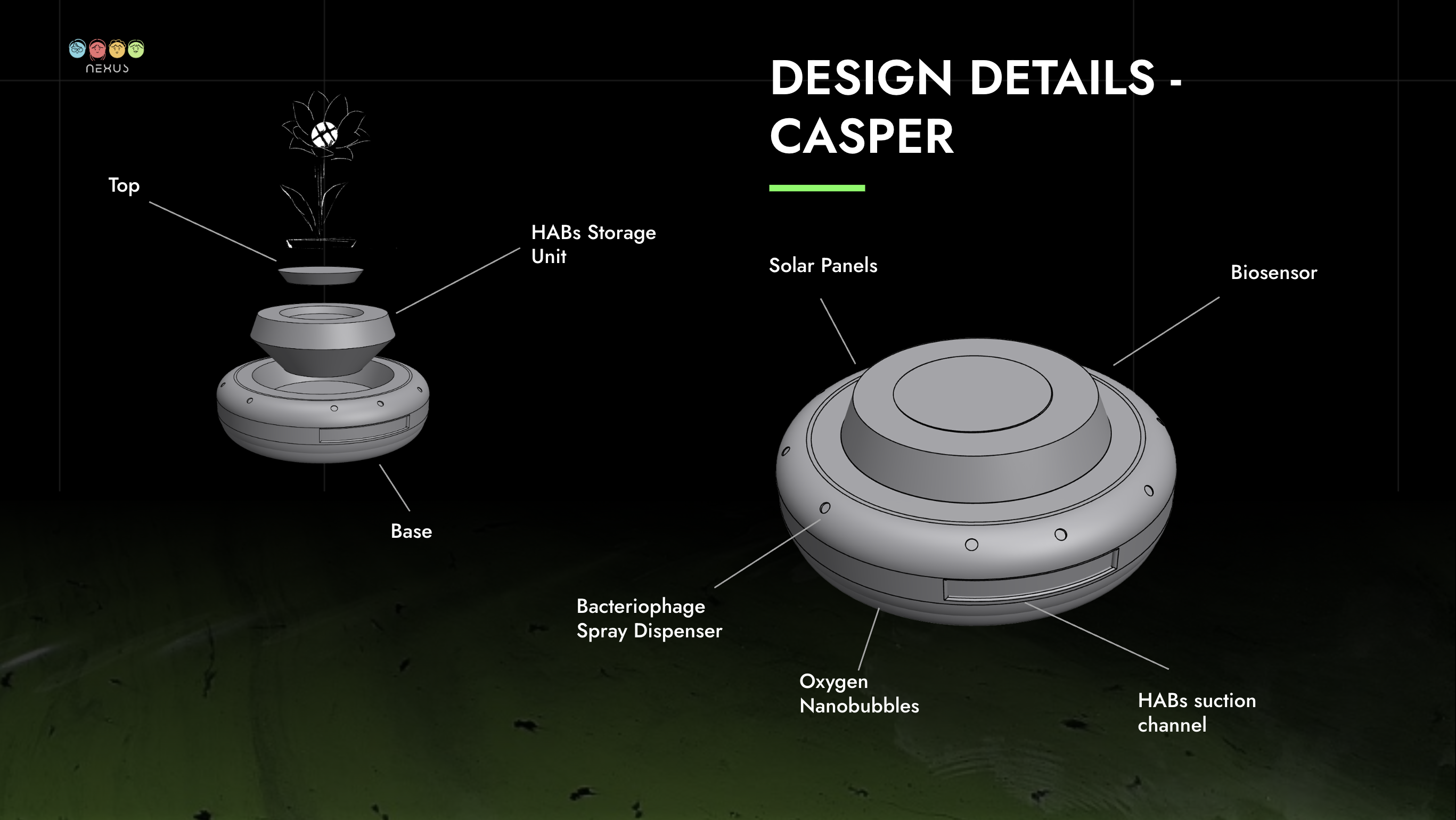
Here’s how Casper works:
✅ Passive Monitoring: It sits in the lake, continuously analyzing water conditions.
✅ Responsive Action: When HABs are detected, it activates the appropriate treatment method.
✅ Efficient Collection: It uses a propulsion system to follow water currents and suction chambers to gather algae.
✅ Seamless Disposal: Casper docks at the end of the pond, attaching to a suction tube that transports the collected algae for biomass extraction.
What’s Next?
With Casper designed and our system mapped out, we’re now focusing on refining feasibility, tech integration, and prototyping. This journey has been anything but predictable, but that’s what makes it exciting.
Stay tuned for more updates! 🚀

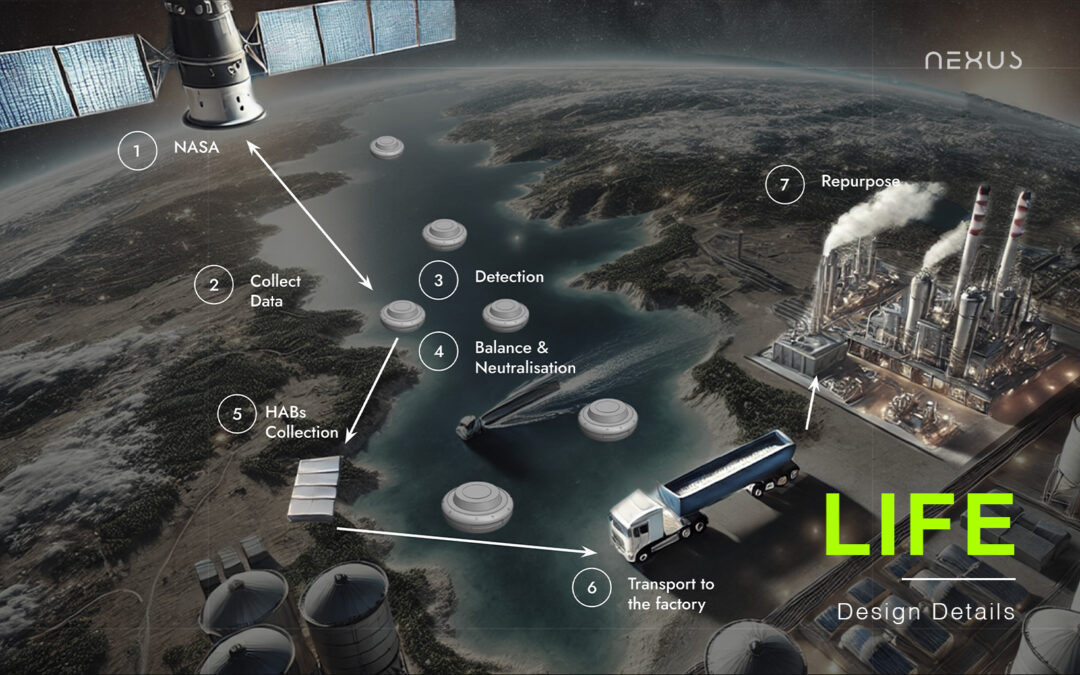
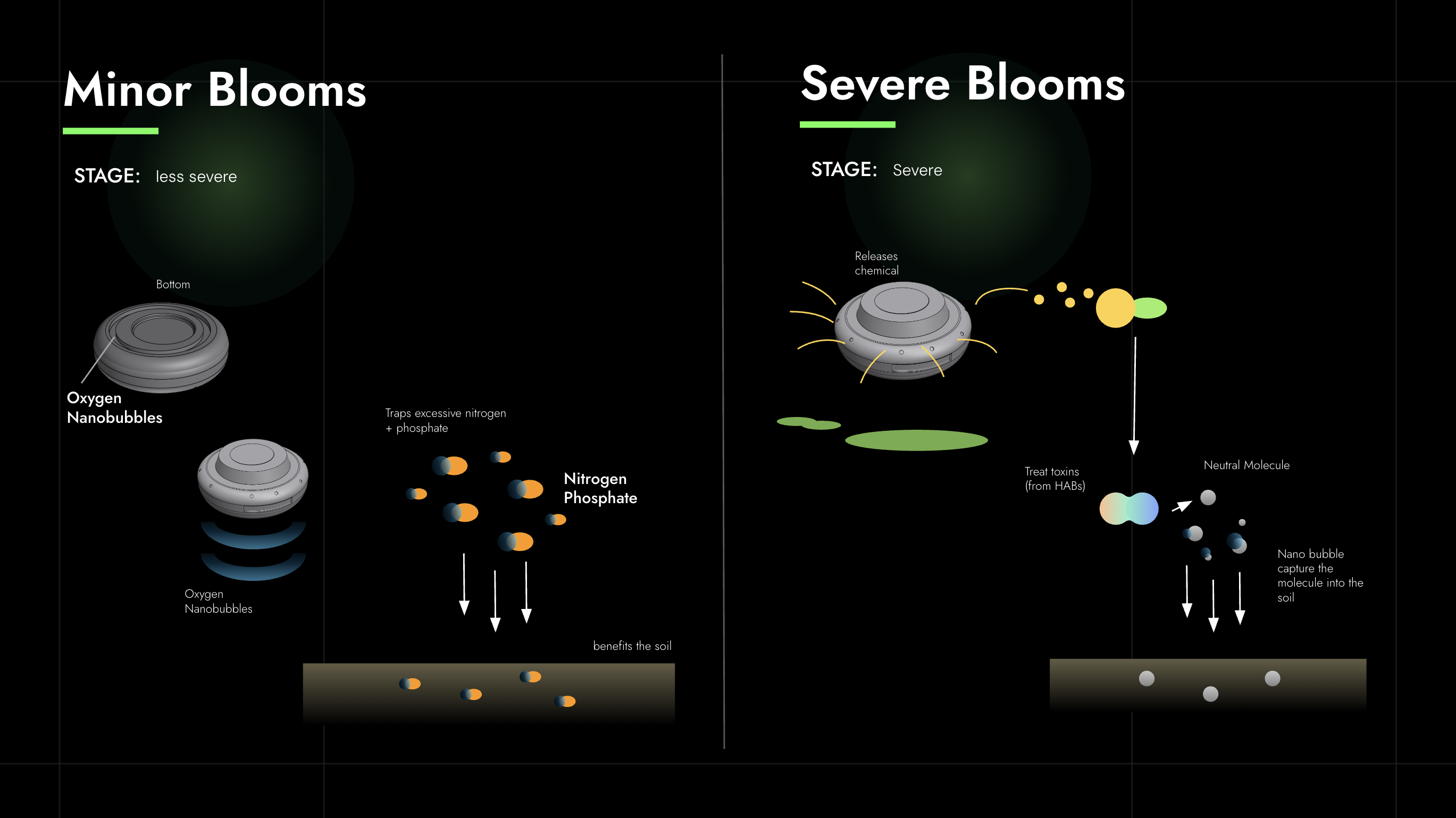
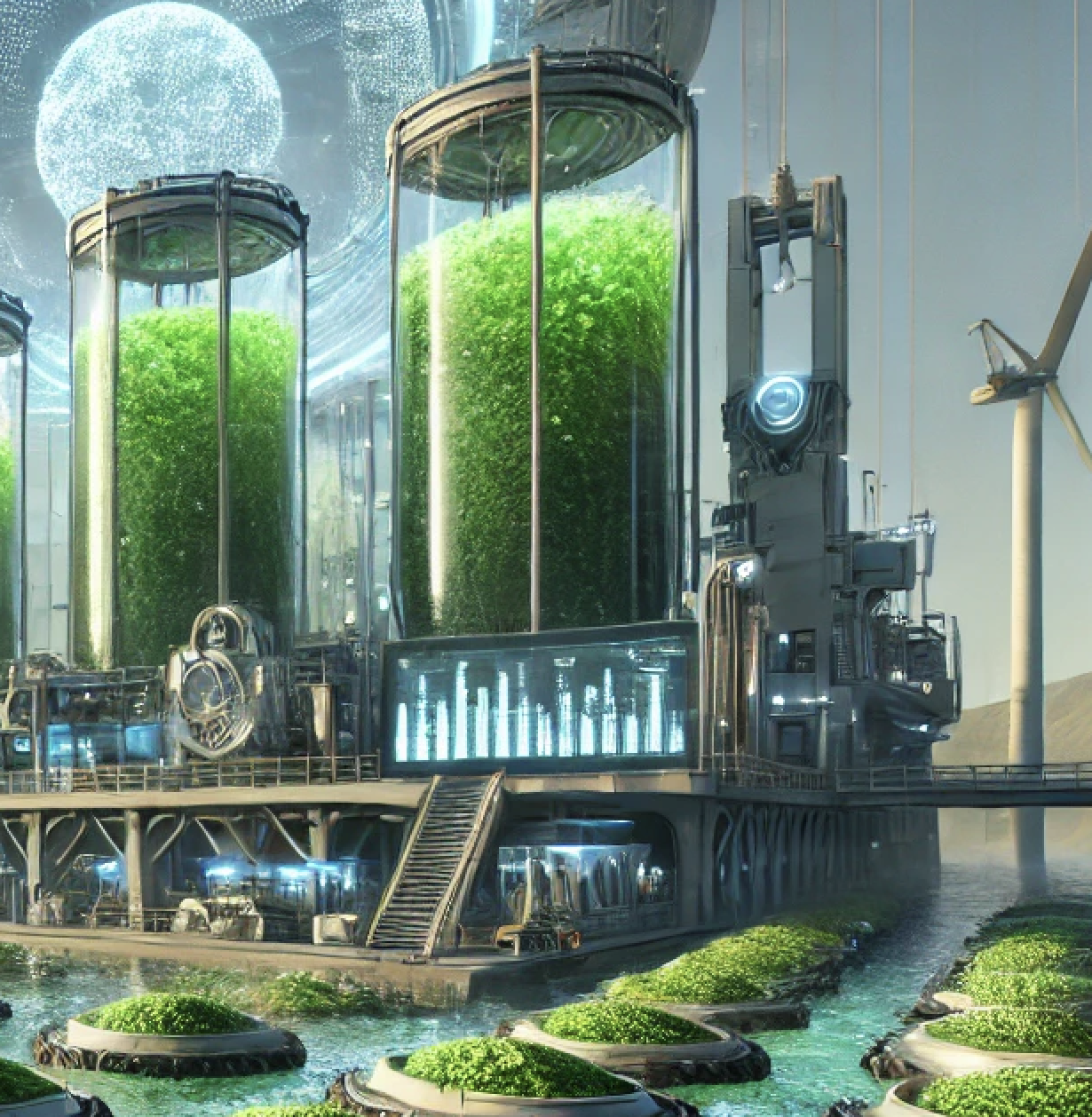
Recent Comments